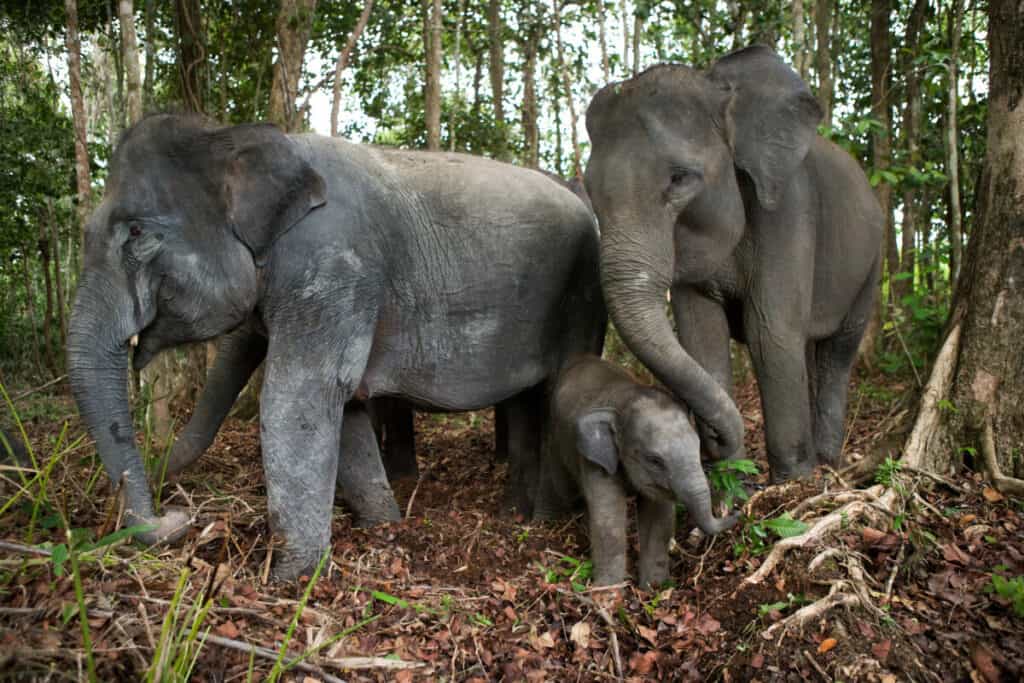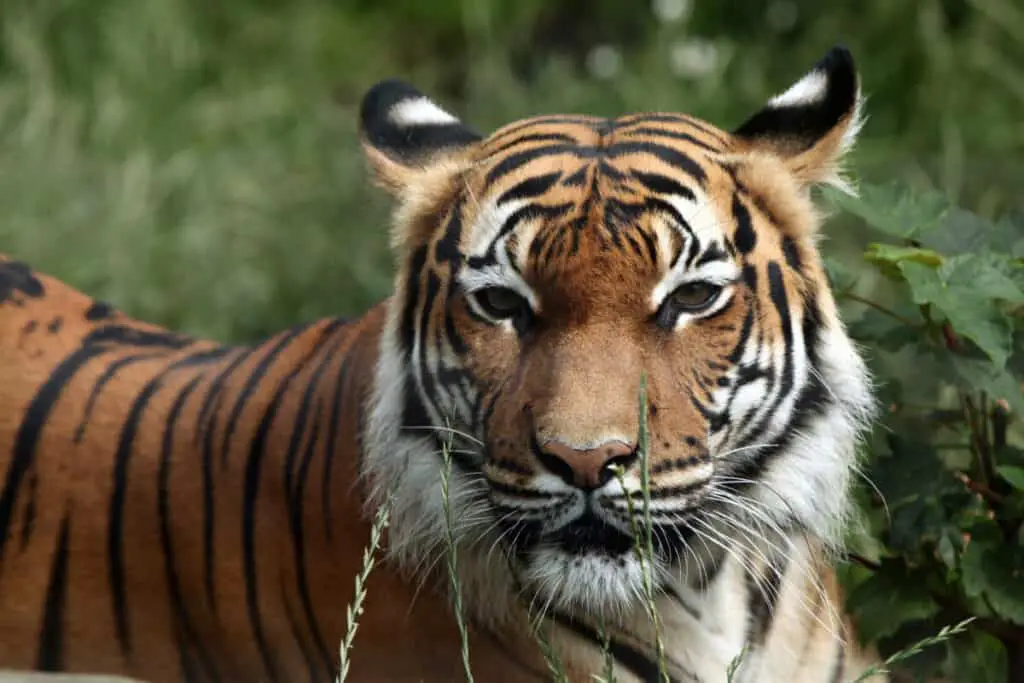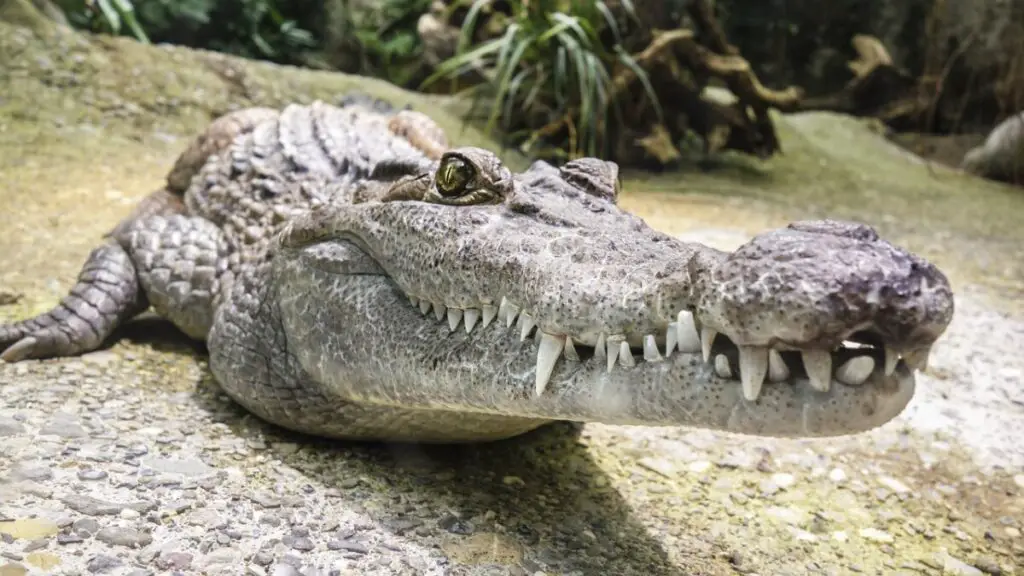Asian elephants are the largest land animals in Asia and are considered to be keystone species that play a vital role in maintaining ecological balance. However, they face numerous threats from humans as well as natural predators. Understanding the predators of Asian elephants is crucial for their conservation and management.
The habitat of Asian elephants has been shrinking due to human activities such as deforestation, agriculture, and urbanization. This has resulted in increased conflicts between humans and elephants leading to retaliatory killings by farmers and poaching for ivory trade.
In addition to these anthropogenic threats, natural predators also pose a significant threat to the survival of Asian elephants. Identifying these predators and understanding their behavior can aid in formulating effective conservation strategies for elephant populations across their range.

Importance Of Understanding Asian Elephant Predators
Conservation efforts for the Asian elephant have been ongoing due to their significant role in maintaining ecological balance. These elephants play an important role as seed dispersers, which contributes to forest regeneration and helps maintain biodiversity.
However, understanding their predators is equally important in ensuring their survival. The knowledge of predators can help conservationists develop effective strategies to protect these animals from harm. Furthermore, identifying the main predators of Asian elephants could also provide insights into how they interact with other species in their ecosystem.
By studying predator-prey interactions, we can better understand the complex relationships between different animal populations and ultimately contribute towards preserving ecological balance.
Human-Induced Threats To Asian Elephants
Asian elephants, like many other species of wildlife, face numerous threats from human activity. The most significant threat to the survival of Asian elephants is habitat loss and fragmentation caused by deforestation, agriculture expansion, urbanization, and infrastructure development such as roads and railways. As a result of these activities, elephant populations have become isolated in small pockets of forests that are inadequate for their survival. This has led to increased competition for resources among elephants and intensified conflicts with humans.
Human-elephant conflict (HEC) is another major threat to the survival of Asian elephants. With shrinking habitats, elephants often wander into agricultural lands or residential areas in search of food or water, which can lead to crop damage and even human fatalities. In retaliation, farmers may kill or injure the animals using various methods such as poison or guns. HEC not only poses a direct threat to elephant populations but also creates negative attitudes towards them among local communities.
Increasing awareness about conservation efforts can help mitigate human-induced threats on Asian elephant populations.
As a result of these challenges faced by Asian elephants due to human activity, it’s essential for policymakers and conservationists alike to take measures that would minimize habitat destruction while promoting coexistence between humans and wild animals.
Measures could include creating wildlife corridors connecting fragmented habitats or providing incentives for farmers who adopt non-lethal methods for repelling elephants from their fields. By working together with local communities through education programs around effective management practices that reduce adverse interactions between people and wildlife, we can ensure a future where both humans and Asian elephants thrive side-by-side.
Retaliatory Killings By Farmers
Human-induced threats to Asian elephants have been a major concern for conservationists in recent years. One of the primary reasons behind their declining population is habitat loss due to deforestation, agricultural expansion, and urbanization. Another significant threat that these majestic creatures face is poaching for ivory and body parts, which are highly valued in traditional medicine.
Apart from human-induced threats, Asian elephants also have natural predators such as tigers and wild dogs. While tigers prey on young or weak individuals, wild dogs tend to attack lone adult elephants. However, compared to other large herbivores like rhinos and buffalo, elephant predation by carnivores is relatively rare. Despite this fact, retaliatory killings by farmers who try to protect their crops from crop-raiding elephants remain one of the most severe issues faced by Asian elephant populations today.
| Impact on Farmers | Alternative Solutions |
|---|---|
| Loss of livelihood | Electric fences |
| Crop damage | Community patrols |
| Threats to life | Early warning systems |
| Property damage | Payment for damages |
The impact that crop-raiding elephants have on farmers cannot be overstated. These animals can quickly destroy entire fields of crops overnight, leaving farmers with nothing but losses. In addition to economic harm, they also pose a physical threat to humans when encountered directly while raiding farms. To mitigate these conflicts between farmers and elephants, several alternative solutions have been proposed over the years.
Some methods include electric fences around farmland borders or community-based patrols that intervene before escalating incidents occur. Other options involve early warning systems that alert local communities about approaching herds or payment for damages caused by elephant raids. Overall, it is essential to find sustainable solutions that balance both the needs of the community and those of wildlife conservation efforts to ensure peaceful coexistence between humans and animals alike.
Poaching For Ivory Trade
One of the major threats to Asian elephants is poaching, particularly for their ivory tusks. The demand for elephant ivory has led to a significant decline in elephant populations across Asia.
Elephants are highly intelligent and social animals that play an important ecological role in their habitats. However, the illegal trade of ivory continues to devastate elephant populations. The effect of poaching on elephant populations cannot be overstated.
In some parts of Asia, such as Thailand and Vietnam, there has been a sharp decline in the number of wild elephants due to hunting and habitat loss. This not only affects the survival of individual elephants but also disrupts ecosystem functions like seed dispersal and nutrient cycling.
To combat this issue, governments have implemented measures such as increased law enforcement efforts against poachers and raising awareness about the impact of ivory trade on wildlife conservation. Unfortunately, these measures have shown limited success so far.
The continued demand for ivory perpetuates poaching activity despite government efforts. It is imperative that consumers recognize how purchasing ivory contributes to this problem and take action by refusing to buy products made from it.
These actions can help reduce the pressure on elephant populations while promoting sustainable practices that support conservation efforts for future generations without sacrificing biodiversity or human livelihoods.
Natural Predators Of Asian Elephants
Asian elephants, like most large herbivores, have few natural predators. Their size alone is often enough to deter potential attackers.
However, young calves are vulnerable and can fall prey to tigers or crocodiles in some areas. Additionally, adult elephants may occasionally be hunted by humans for their ivory tusks or as a threat to crops.
Despite the limited threat from natural predators, elephant protection remains an important aspect of wildlife management. Habitat loss due to human activity such as deforestation and agricultural expansion poses a significant risk to elephant populations.
Furthermore, conflicts between humans and elephants over resources can lead to retaliatory killings that further threaten these majestic creatures. Effective conservation efforts must address both habitat preservation and methods for mitigating human-elephant conflict in order to ensure the survival of Asian elephants.

Tigers
In areas where Asian elephants and tigers coexist, young elephants may be at risk of predation by tigers. Tigers are powerful carnivores and are capable of bringing down large prey. They typically target calves or weakened individuals that are more vulnerable. Tigers use their strength, speed, and stealth to ambush and overpower young elephants, delivering fatal bites to the neck or throat.

Crocodiles
In certain regions where Asian elephants inhabit, such as areas with rivers, lakes, or wetlands, they may encounter crocodiles. While direct predation on adult elephants is extremely rare, calves or weak individuals may be at risk.
Crocodiles lie in wait near water sources and can launch surprise attacks on unsuspecting young elephants that approach the water’s edge. Once caught, crocodiles use their powerful jaws and death roll technique to subdue and drown their prey.
Behavior Of Natural Predators
Understanding the behavior of natural predators is crucial in predicting how they interact with their prey and, consequently, how to protect vulnerable animals.
In the case of Asian elephants, these majestic creatures face many potential threats from carnivorous predators that are typically found within the same habitats as them. Despite being one of the largest land mammals on earth, adult elephants have few natural enemies other than humans; however, young calves may fall victim to larger carnivores such as tigers or leopards.
Elephant herd dynamics play a significant role in protecting young calves against potential predators. Mothers within elephant herds will work together to defend their offspring by forming a protective ring around them when threatened. Additionally, if an elephant senses danger nearby, it will use its powerful trunk to pick up scent particles which can be analyzed for any signs of danger.
While predator-prey interactions between Asian elephants and carnivorous animals remain rare due to the sheer size and strength of adult elephants, caution should always be exercised when encountering wild animals – especially during times where food resources may be scarce.
Some key factors affecting predator-prey interactions include habitat fragmentation and human encroachment. Predators must constantly assess risks associated with attacking large herbivores like elephants. The presence of lion-tailed macaques (an omnivorous species) near areas where Asian elephants live has been shown to reduce predation risk for juvenile elephants.
Juvenile Asian elephants frequently travel alongside older individuals who provide protection from predators. Understanding predator behavior can help conservationists develop more effective strategies for mitigating conflict between wildlife and human populations living near protected areas.
Conservation Strategies For Asian Elephant Populations
After discussing the behavior of natural predators, it is important to acknowledge that Asian elephants are not typically preyed upon by any animals. However, they do face threats from human activities such as habitat destruction and poaching for their ivory tusks. These factors have significantly impacted the populations of Asian elephants in recent years.
To combat these threats, conservation methods such as habitat preservation and anti-poaching efforts have been implemented. Many governments and organizations have established protected areas where elephant populations can thrive without interference from humans. Additionally, education programs have been created to raise awareness about the importance of protecting these majestic creatures and their habitats.
| Threats | Conservation Methods |
|---|---|
| Habitat Destruction | Protected Areas |
| Poaching | Anti-Poaching Efforts |
Overall, while Asian elephants may not have natural predators, they still face significant challenges when it comes to survival due to human activities. Through continued conservation efforts, there is hope that their populations will recover and that future generations will be able to appreciate these magnificent animals in their natural habitats.
Conclusion
Understanding the predators of Asian elephants is crucial for their conservation efforts. While human-induced threats such as retaliatory killings and poaching pose a significant danger to these gentle giants, natural predators also play a role in regulating elephant populations in their native habitats.
Tigers and crocodiles are among the natural predators of Asian elephants. Tigers typically target young or weak individuals while crocodiles prey on adult elephants when they come to drink water from rivers or lakes. However, it is important to note that interactions between elephants and their predators have become rare due to habitat loss and fragmentation caused by human activities.
Conservation strategies must prioritize protecting both elephants and their natural habitats to ensure their survival in the wild.
In conclusion, understanding the various factors that threaten Asian elephant populations can help implement effective conservation measures. Protecting these majestic creatures from all forms of harm, including human-induced threats as well as predation by natural predators like tigers and crocodiles, requires concerted efforts towards habitat restoration, community engagement, public awareness campaigns, law enforcement against poachers and illegal wildlife trade networks. Only then can we hope to preserve this magnificent species for future generations.

